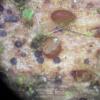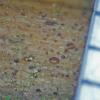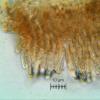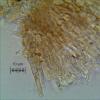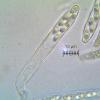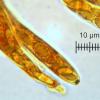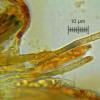
18-12-2025 21:17
Pol DebaenstThe identification took me to Byssonectria deformi

15-12-2025 07:09
 Danny Newman
Danny Newman
indet. Rutstroemiaceae sp. on unk. fallen leavesMc

19-12-2025 10:10
Patrice TANCHAUDBonjour, récolte réalisée en milieu dunaire, a

18-12-2025 17:23
 Bruno Coué
Bruno Coué
Bonjour,je serais heureux d'avoir votre avis sur c

18-12-2025 18:07
Margot en Geert VullingsThese plumes were found on rotten wood.They strong

17-12-2025 18:35
 Michel Hairaud
Michel Hairaud
Bonjour à tous/Hi to everyone I am passing along

15-12-2025 15:48
 Danny Newman
Danny Newman
Melanospora cf. lagenaria on old, rotting, fallen

15-12-2025 15:54
 Johan Boonefaes
Johan Boonefaes
Unknown anamorph found on the ground in coastal sa

15-12-2025 21:11
 Hardware Tony
Hardware Tony
Small clavate hairs, negative croziers and IKI bb
 Hi again,
Hi again,on that rubus-twig I found a second fungus of the Naevioideae. They are very difficult, I think.
This one opens with a lid like in Trochila, apothecia up to 0,2 mm, spores ellipsoid, hyalin with two large guttules and some smaller ones, (9-10) 9,63x3,94 (3,5-4) µm. Asci cylindric to clavate, 50-69 x 7-8 µm,porus-reaction Ikl positive, dull-violett to blue, biseriat with croziers. Paraphyses with strongly refractive content, cylindrical, 4 µm wide. Marginally hairs? up to 45 x 4 µm, 5 cells, 4 are light brown, the cell at the end is clavate, hyalin.
Thank you for your help.
Regards Maren
?

I overlooked this, sorry. It is not Naevioideae but a relative of Trochila as you compared. Hysterostegiella would be an option, but the paraphyses are there always lanceolate. H. dumeti would be on Rubus but has much smaller spores with a low oil content (as also all the other Hysterostegiella species treated by Hein 1983).
I know a similar fungus, in which I never saw a lid like here, though it is erumpent and pushes the epidermis aside, see HB 3802. I used to identify this at first as Duebenia cf. blyttiana, but only until I studied the type of it. Now I have it as "Duebenia-like" in Hysterostegiella, though it could better fit in Trochila. In my HB 5801 the paraphyses are actually slightly lanceolate. Contrary to yours the asci are alway inamyloid there.
The excipulum is covered by crystals. Is this also in yours? I think one of your middle pics show crystals.
Zotto

